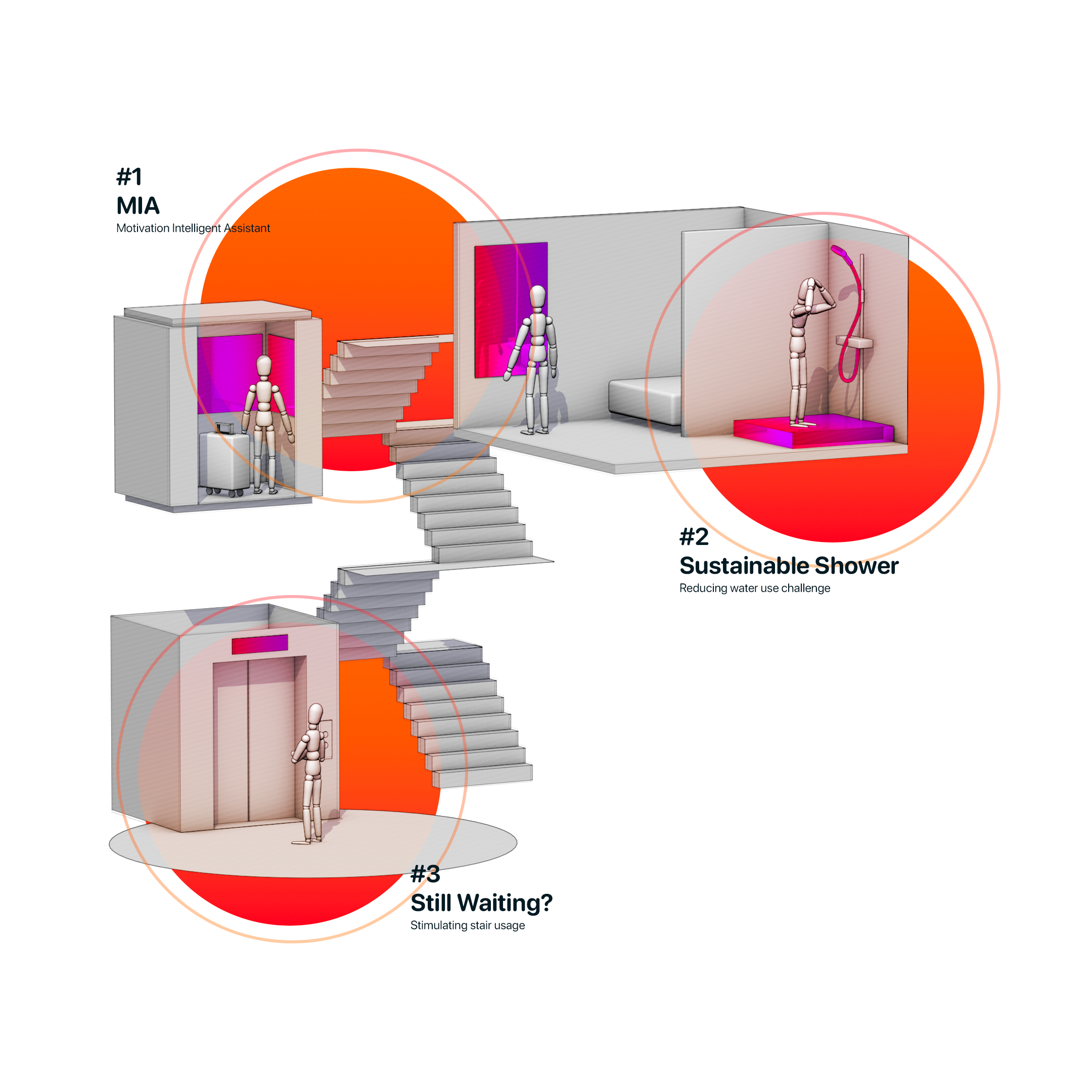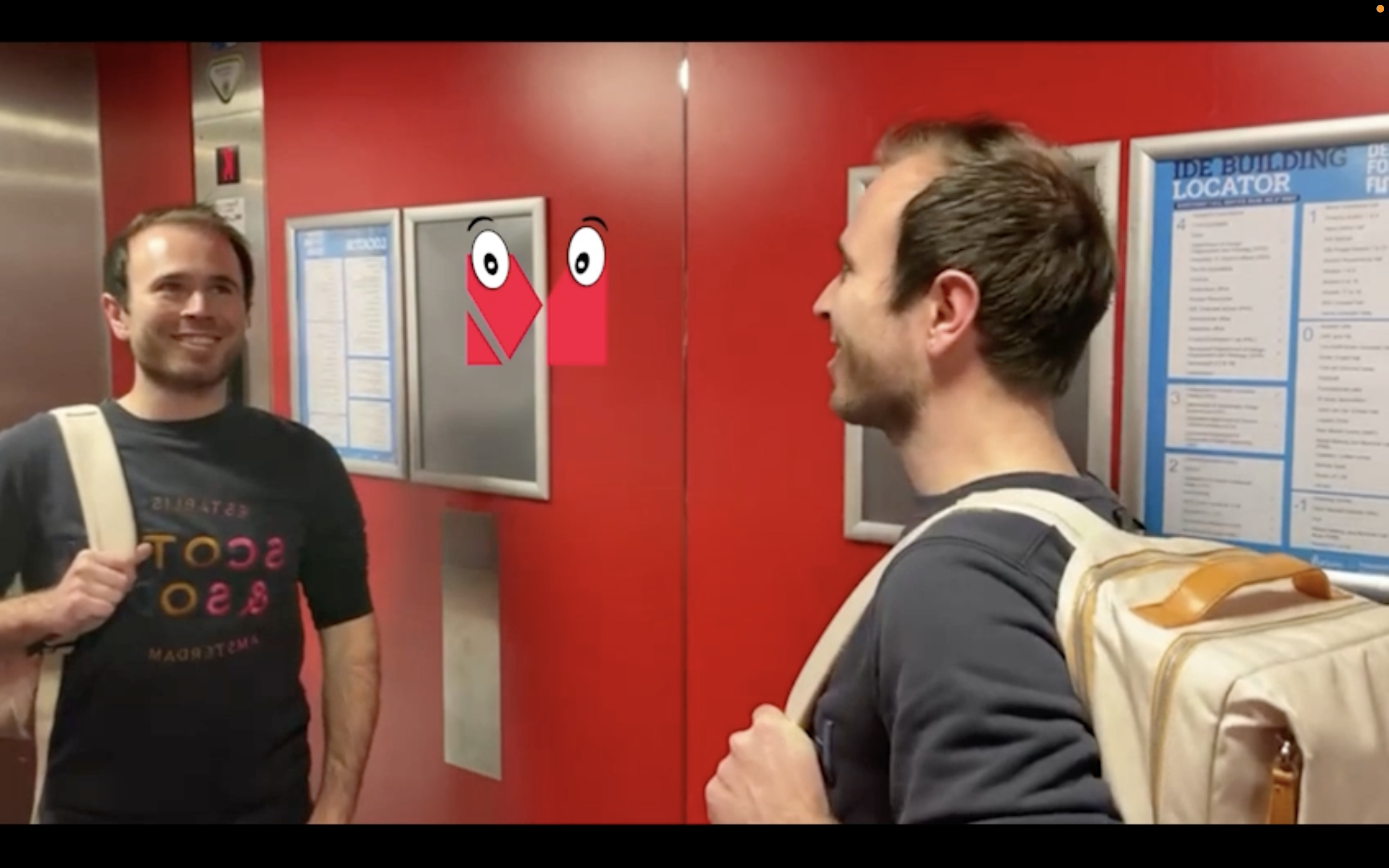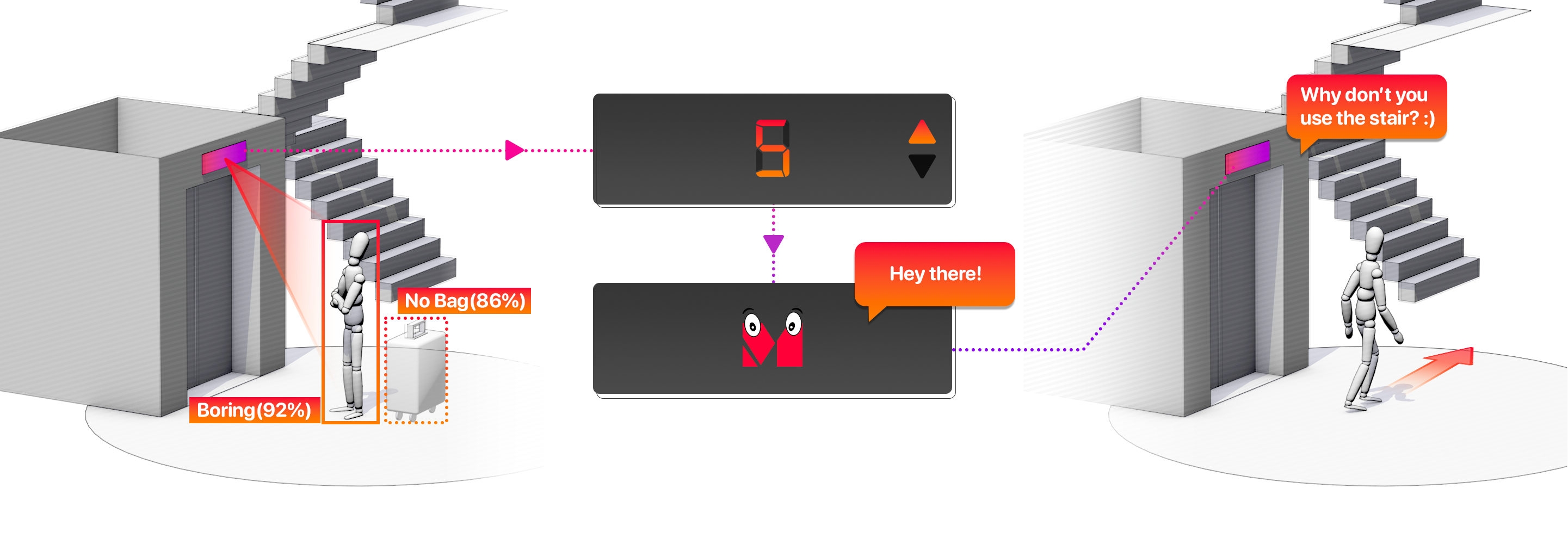
Exhibition 1_Page Group 18
| Team number | ?Group 18 |
|---|---|
| Students | Lindy KokHyunmin LeeDanielle Sven Muller |
| Coach | ?Maria Luce Lupetti |
| Brief | citizenM |
| Keywords | AIEmotionexperience |
| Exhibition link | |
| Status | In progress |
| One liner! | Sustainable challenge with MIA |
| Link to video |
Introduction
Our current goal is focused on changing the behavior of the guest in a sustainable way. Many people assume sustainable behaviour is a bit boring. In addition, guests of the hotel still want to have a luxurious and inviting experience during their stay. We want to provoke conscious behavior change, which can be fun and stimulating!
In the overview below, our ideas are briefly explained. We will discuss them more in-depth later on. During this first part, we explored different possibilities where a guest can improve their behavior. We narrowed them down to:
- Elevator use
- Shower time (reducing water use)
- Stimulating the use of stairs over the elevator


?? How it works
MIA is voice assistance that guests can access through mirrors and screens around the hotel. In their hotel room, she responds when the guest says: ?Hi, Mirror?. The voice assistant will appear and start a conversation. The first interaction with MIA is in the elevator (only when the guests wants to have a conversation and thus says ?hi, mirror?.

In addition to the facilities CitizenM has at the moment, this voice assistant will help guests to set a 'sustainability goal' during their stay and contribute to sustainable behavior change. Furthermore, MIA will suggest making conscious choices during their stay, such as using the stairs instead of the elevators or shortening their shower time.
During their stay, their progress (achievements) is visualized in the mirror. This will support the guests to stay motivated in changing their behaviors in a sustainable way.
?? Prototype
In the prototype, we show the conversational setting of MIA by using Voiceflow, which provides the ?sustainable challenge? to the guest. First, you will have to introduce yourself, followed up by choosing a difficulty of challenges. During your stay, MIA will track if you hold up to your challenge.
??Findings
( + )
- People like the idea of setting a challenge
- Would be nice to be able to create your personal buddy
- Competing to other guests is very interesting and motivating
( - )
- People experienced the feeling of ?being watched?, especially through the mirror.
- People experienced the feeling of ?being bugged? all the time
- When people are with others in the elevator, they will not start talking to MIA

?? How it works
One of the challenges that MIA proposes is having a short shower time. At first, the guest can decide to take up this challenge, then he or she can choose the difficulty of this challenge. Easy will mean, try to take a shower for 7 minutes, normal for 5 minutes, and hard for only 3 minutes. When the guest has chosen one of the difficulties, for example normal, lights that are on the showerhead will turn on and will fade out after 5 minutes. When the shower has been turned off in time, the shower can give positive feedback.
With this idea, we want to stimulate guests to reduce their water use in the hotel room without giving them a feeling of dissaprovement and or pressure.

?? Prototype
For the prototype, we used Arduino. If the button is pressed, four lights will turn on and slowly fade out. We also used edge impulse for detecting the sound of water dropping in the shower. We wanted to connect this to Arduino, in such a way that, once the technology has detected the sound of taking a shower, the lights will be turned on. Unfortunately, we did not manage to fix this yet, due to time constraints.

??Findings
( + )
- Good to get feedback about the challenge you just set for yourself
- Still feels like its your own choice
( - )
- The test setup was not convenient due to a lot of daylight
- The visual indication was not seen by every tester.
- The representation of the lights was not clear to everyone.

?? How it works
We don?t want to force the guests and ruin their hotel experience. So first, MIA will recognize if the guests waiting in front of the elevator are capable of using the stairs. It will detect their ?feeling-bored? gestures and whether they have luggage or not.
When it recognizes that the guest, without bags, is killing time in front of the elevator, it will provide the guest with visual and audio feedback to stimulate them to use the stairs over the elevator.
*We could expand our idea to make the stair-use an interactive and fun experience.

?? Prototype
For the first prototype, we trained the computer with multiple images to recognize if people are carrying luggage. It is used for one of the triggers to make a change on the elevator display. MIA will appear and give a verbal suggestion to use stairs instead of using the elevator. When one does have luggage, MIA will not appear (but she is still able to access, with prototype 1).
??Findings
( + )
- The difference between with and without a bag is clever and useful
( - )
- The elevator was moving before MIA appeared, thus already using electricity.
- Not everyone would use the stairs after a long day of work/leisure.
- People will be more motivated if the stairs offer a beautiful/fun experience

Conclusion
This was a short introduction to our three prototypes. We could not finish all the prototype to work appropriately, but with manual support by us, the general idea was clear for the test. In the link below, the prototypes are explained more clearly as they represent the intended use and are set in the right context. Feel free to watch, to better understand how our prototypes work in changing behavior in a sustainable way.
LINK TO OUR VIDEO
What?s Next
For the coming weeks, we want to focus on improving and extending one prototype (or combining them), through an iterative process. There are many possibilities to make it more interactive and desirable. Two options that we want to explore are:
- Involving aspects/art of the relevant city, as CitizenM wants to bring the guest closer to the city they are staying in.
- Implementing a reward system to work as a stimulant for the guests to fulfill their challenges.

Questions
- Will the use of stairs, over the use of the elevator, reduce electricity use enough/significantly?
- Are these prototypes within the scope you presented?
- In which prototype do you see the most potential?






